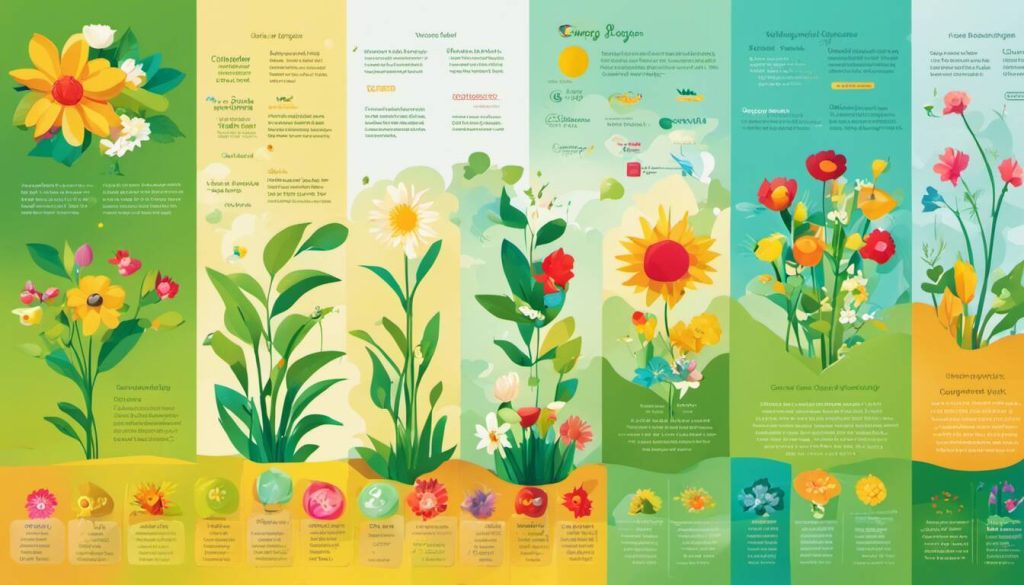In today’s rapidly evolving digital landscape, the importance of a robust online presence cannot be overstated. Whether you are a seasoned business owner seeking superior search visibility or a new entrepreneur aspiring to reach the top of SERPs, it all circles back to one crucial factor – Search Engine Optimization (SEO). Let’s dive into some practical and proven SEO strategies to catapult your website’s ranking and traffic. Imagine the immense growth potential if your website consistently appears on Google’s first page. Sounds intriguing? Read on!
Search Engine Optimization or SEO is the practice of optimizing a website’s content and structure with the goal of increasing its visibility on search engines like Google, Bing, and Yahoo. The higher a website ranks on these search engines, the more likely it is to attract organic traffic from users searching for relevant keywords related to that website. SEO includes tactics such as researching keywords, creating high-quality content, optimizing site architecture and page speed, building quality backlinks, and much more.

SEO Keyword Research and Applications
One of the foundational elements of effective search engine optimization (SEO) is keyword research. SEO keyword research involves identifying the specific words and phrases that people are using to search for information, products, or services related to your website. By understanding these keywords, you can strategically optimize your website’s content to match the search intent of your target audience.
For example, if you have a website selling organic skincare products, your keyword research may reveal that potential customers often search for terms like “best natural face moisturizer” or “organic skincare routine.” By incorporating these keywords into your website’s content, meta tags, headers, and URLs, you increase the likelihood of your site appearing in search engine results when users search for those specific terms.
To conduct effective keyword research, start by brainstorming a list of relevant topics and phrases related to your business. Then use various tools – such as Google Keyword Planner, SEMrush, or Moz Keyword Explorer – to identify high-volume keywords with moderate competition. These tools provide insights into the average monthly search volume for specific keywords and help you discover related terms that you might not have considered.
After selecting relevant keywords, it’s crucial to strategically apply them throughout your website. This includes integrating them into your page titles, meta descriptions, header tags, image alt tags, URL slugs, and within the body text of your content. However, it’s important to maintain a natural flow and avoid overstuffing keywords – search engines now prioritize user experience over keyword density.
Additionally, SEO keyword research is an ongoing process. As trends shift and user behavior evolves, it’s essential to regularly revisit and update your selected keywords to stay relevant and competitive in search rankings.
Now that we understand the importance of SEO keyword research and its application in optimizing website content let’s explore the significance of long-tail keywords.
Importance of Long-Tail Keywords
Long-tail keywords are specific, highly targeted search phrases that typically consist of three or more words. While they may have lower search volumes compared to broad keywords, they often exhibit higher intent and conversion rates.
Long-tail keywords tend to be more descriptive and refined, leading to more relevant search results for users. For example, instead of searching for “car insurance,” a user may search for “affordable car insurance for young drivers in Boise.” By incorporating long-tail keywords into your website’s content, you can attract visitors who are actively seeking what you offer, resulting in higher engagement, conversions, and ultimately, business growth.
Imagine you run a bakery in Boise. While using the keyword “bakery” in your SEO strategy might generate some traffic to your website, it’s also likely to attract individuals looking for general information about bakeries or those located outside of Boise. However, if you focus on long-tail keywords like “freshly baked artisan bread in Boise” or “custom birthday cakes near downtown Boise,” you’re more likely to reach individuals who are specifically interested in your offerings and are ready to make a purchase.
Moreover, long-tail keywords often present a less competitive landscape compared to broader terms. This means that by targeting these niche phrases, you have a better chance of ranking higher in search engine results pages (SERPs) and outranking your competitors.
Long-tail keywords can provide valuable advantages when it comes to SEO. However, it’s important not to overlook the significance of link building in enhancing your website’s visibility and overall SEO success.
- According to Internet Live Stats, Google now processes over 3.5 billion searches per day. Thus, understanding SEO becomes crucial for online visibility.
- Data from HubSpot suggests that 75% of users never scroll past the first page of search results, emphasizing the critical importance of SEO.
- A recent survey by Databox revealed that increasing organic traffic was the primary goal for about 66% of marketers, making SEO a widely accepted essential technique for digital marketing.
Link Building: Vital for SEO Success
When it comes to search engine optimization (SEO), one of the most crucial strategies for boosting your website’s ranking and traffic is link building. Simply put, link building refers to the process of acquiring high-quality backlinks from other websites that point to your own. These backlinks act as votes of confidence and credibility in the eyes of search engines like Google, indicating that your website is trustworthy and valuable.
Search engines view links as endorsements or recommendations from other websites. Therefore, having a strong and diverse set of backlinks can significantly impact your website’s visibility in search engine results pages. Quality backlinks not only drive direct referral traffic but also send positive signals to search algorithms, helping improve your organic rankings.
Consider a scenario where you have a local bakery website aiming to rank higher on Google for searches related to “bakery in Boise, Idaho.” If a popular food blog or a local business directory links to your website, search engines recognize these as credible sources endorsing your bakery’s expertise and reputation. Consequently, they are more likely to prioritize your website in search results when people search for bakeries in Boise.
However, not all backlinks are created equal. It’s important to focus on gaining high-quality backlinks that provide maximum SEO value. Instead of engaging in spammy tactics or paying for low-quality links, which can harm your website’s reputation, strive to acquire organic and relevant backlinks from authoritative websites within your industry or niche.
Imagine you’re attending a professional conference where you have the opportunity to meet top experts in your field who acknowledge and recommend your work. The same principle applies here – high-quality backlinks from reputable websites can elevate your online presence and authority within your industry.
To gain these valuable backlinks, there are various strategies you can employ:
-
Creating compelling content: Develop high-quality, informative, and shareable content that naturally attracts backlinks from other websites. This could include blog articles, expert guides, research papers, infographics, or interactive media.
-
Guest blogging: Contribute guest posts to authoritative websites and blogs within your industry. By showcasing your expertise and providing valuable content, you can earn backlinks in return.
-
Building relationships: Engage with influencers, bloggers, journalists, and industry leaders through social media channels or networking events. Establishing genuine connections can lead to opportunities for link collaborations or mentions in their future content.
-
Utilizing online directories: Submit your website to relevant online directories and listings that are respected within your industry or locality. These directories not only provide a direct backlink but also contribute to establishing credibility and visibility.
-
Earning editorial links: Develop strong relationships with journalists or reporters who cover topics related to your business. Provide them with newsworthy stories or offer yourself as an expert source for interviews. This can result in valuable editorial backlinks from reputable news sources.
Remember, the key is to focus on quality over quantity when it comes to link building. A handful of high-quality backlinks from authoritative websites can have a more significant impact on your SEO success than numerous low-quality links.
Now that we understand the importance of link building, let’s dive further into the process of gaining high-quality backlinks and explore some effective strategies.
Gaining High-Quality Backlinks
Gaining high-quality backlinks involves a combination of strategy, creativity, and persistence. It’s important to approach this process with a long-term mindset, as building reputable backlinks takes time and effort.
One strategy is to create exceptional content that stands out from the competition. When you produce valuable resources, such as in-depth guides or original research studies, other websites will naturally be more inclined to reference and link to your content. Additionally, engaging visual elements like infographics or interactive tools can make your content more shareable and increase the likelihood of receiving backlinks.
Instead of waiting for others to discover your content, outreach to relevant websites and influencers within your niche. Craft personalized emails introducing yourself and your content, explaining why it would be valuable for their audience. Building genuine relationships and providing value to others can result in organic backlinks as they share your content with their network.
Some argue that link building through email outreach is challenging and time-consuming, especially since many webmasters receive numerous link requests each day. While this is true to an extent, a well-thought-out outreach strategy that demonstrates the value of your content can still yield positive results. Moreover, when you focus on quality engagement rather than mass-emailing every website, you increase the chances of success.
Another effective approach is to utilize social media platforms strategically. Sharing your content on social media networks can attract attention from influencers who may then link to it. Engage with relevant communities and participate in discussions related to your industry or niche. By positioning yourself as an expert and providing helpful insights, you increase the likelihood of others referencing and linking to your content.
For instance, participating in industry-specific forums or Quora discussions allows you to answer questions and offer valuable advice while establishing yourself as a credible source within your field. When people recognize your expertise, they may link back to resources on your website when discussing related topics.
Lastly, don’t underestimate the power of building relationships with other website owners and bloggers through networking events or online communities. Genuine connections can lead to opportunities for collaborative projects and guest blogging, where you can earn high-quality backlinks.
Link building is a fundamental aspect of SEO success. Now that we have explored its importance and effective strategies for gaining high-quality backlinks let’s move on to another critical area of optimizing your website for search engines: On-Page vs. Off-Page Optimization.
On-Page vs. Off-Page Optimization
To understand the various strategies used in search engine optimization (SEO), it’s important to distinguish between on-page optimization and off-page optimization. These two approaches work together to enhance the visibility and ranking of your website on search engine result pages (SERPs).
On-page optimization refers to the optimizations that you make directly on your website itself. It involves optimizing elements within your web pages such as meta tags, title tags, headings, URL structure, internal linking, keyword usage, and content quality. By focusing on these factors, you can improve how search engines understand and evaluate your website’s relevance and authority for specific keywords or topics.
For instance, let’s imagine you have a blog post about “best hiking trails in Boise.” To optimize this page effectively using on-page techniques, you would ensure that your meta title includes relevant keywords like “Boise hiking trails,” the URL structure is clean and descriptive (e.g., /best-hiking-trails-boise), headers contain targeted keywords, and the content provides comprehensive information about each trail with appropriate keyword usage.
Off-page optimization, on the other hand, refers to activities performed outside of your website to boost its credibility and authority in the eyes of search engines. This mainly involves earning high-quality backlinks from reputable websites, social media engagement, online reviews, brand mentions, and other external signals of trustworthiness. Off-page optimization helps search engines understand that your website is endorsed by other authoritative sources and deserves a higher position in SERPs.
In essence, successful SEO strategies require a combination of both on-page and off-page optimization efforts. While on-page tactics focus on improving your website’s structure and content relevancy, off-page tactics enhance its reputation and authority in the broader online ecosystem. Both aspects play a crucial role in achieving higher rankings and increasing website traffic.
Elements of Successful On-Page SEO
Now that we understand the distinction between on-page and off-page optimization, let’s dive deeper into the elements that make on-page SEO successful.
-
Keyword Research: In-depth keyword research helps you identify the most relevant search terms and phrases for your target audience. By strategically incorporating these keywords into your content, meta tags, and other HTML elements, you enhance your website’s visibility for users searching for those specific terms.
-
High-Quality Content: Creating valuable, informative, and engaging content is a cornerstone of effective on-page optimization. Your content should satisfy user intent by providing relevant answers to their queries. Incorporate targeted keywords naturally throughout the text while maintaining readability and ensuring a cohesive flow.
-
Meta Tags Optimization: Meta tags, including the meta title and meta description, provide concise information about your web page to both search engines and users. Optimizing them with relevant keywords and compelling descriptions can improve click-through rates in search results pages.
-
URL Structure: A clean and descriptive URL structure makes it easier for search engines and users to understand what your page is about. Use hyphens to separate words in URLs and keep them concise and readable.
-
Header Tags: Properly structured header tags (H1, H2, etc.) not only help users navigate your content but also signal to search engines the hierarchical importance of different sections on your page.
-
Internal Linking: Creating a network of internal links within your website helps search engines discover and index your content more efficiently. It also enhances user navigation, encourages longer dwell time on your site, and spreads link equity throughout your web pages.
These are just a few key elements when it comes to successful on-page optimization strategies. Implementing these tactics will lay a strong foundation for improving your website’s rankings and driving organic traffic.
Content Optimization Tips for Better SEO
Creating high-quality, engaging content is essential for improving your website’s search engine optimization (SEO) and attracting more organic traffic. To optimize your content effectively, consider the following tips:
-
Keyword Research: Conduct thorough keyword research to identify relevant and valuable keywords related to your content. Use tools like Google Keyword Planner or SEMrush to discover popular search terms with reasonable competition.
-
Meta Tags Optimization: Optimize your meta tags, including the title tag and meta description, to accurately describe your content and include relevant keywords. Craft compelling meta tags that entice users to click on your website in search results.
-
URL Structure: Create descriptive, keyword-rich URLs that are easily readable by both users and search engines. Avoid lengthy URLs with unnecessary parameters or random characters.
-
Header Tags: Utilize header tags (H1, H2, H3, etc.) to structure your content and improve readability. Incorporate relevant keywords naturally within these headers to signal the importance of specific sections.
-
Optimized Content Length: Aim for comprehensive, in-depth content that provides value to readers. Longer-form articles tend to perform better in search rankings, but remember to maintain quality and avoid unnecessary fluff.
-
Keyword Placement: Strategically place keywords throughout your content, including the title, headings, subheadings, paragraphs, and anchor text for internal and external links. However, ensure that the inclusion of keywords feels natural rather than forced.
-
Image Optimization: Optimize images by using descriptive alt text and optimizing file names for relevant keywords. Compress images without sacrificing quality to improve loading speed.
-
Internal Linking: Include internal links within your content to direct users to other relevant pages on your website. This helps search engines crawl and index more of your site’s pages while providing a better user experience.
-
Mobile-Friendly Optimization: With the majority of internet users accessing websites through mobile devices, ensure your content is fully optimized for mobile viewing. Test your website’s responsiveness and optimize its design accordingly.
-
Regular Updates: Regularly update and refresh your content to keep it current and relevant. Update statistics, facts, and information to provide up-to-date value to your audience.
Remember, while optimizing your content for SEO is crucial, never sacrifice the quality or readability of your content solely for search engine rankings. Ultimately, creating valuable, engaging, and user-friendly content will contribute to long-term success in both SEO and user satisfaction.
Utilizing SEO in Content Creation
When creating content for your website, it’s vital to incorporate SEO strategies from the start. By utilizing SEO techniques during the content creation process, you can maximize its visibility and reach a broader audience. Here are some key points to consider:
-
Keyword Research: Conduct thorough keyword research to identify relevant keywords that align with your content goals. Use these keywords strategically throughout your content while maintaining a natural flow.
-
Content Structure: Organize your content using headers (H1, H2, etc.) to create a logical hierarchy and make it easier for search engines and readers to understand the structure of your page.
-
High-Quality Content: Focus on creating high-quality content that provides value to your audience. Ensure that it is well-researched, informative, and engaging. This not only attracts readers but also improves your chances of earning backlinks from other websites.
-
Optimized URLs: Create user-friendly and SEO-friendly URLs by including relevant keywords that accurately describe the content of each page or post.
-
Concise Meta Tags: Craft compelling meta tags (title tag and meta description) that accurately summarize the content of each page or post. Incorporate relevant keywords naturally without overstuffing.
-
Internal and External Linking: Incorporate internal links to other pages on your website and relevant external links to reputable sources. This helps search engines understand the context and credibility of your content.
-
Optimized Images: Optimize images by using descriptive alt tags, reducing file sizes for faster loading times, and ensuring they are visually appealing and relevant to your content.
-
Consistent Publishing Schedule: Maintain a consistent publishing schedule to keep the content fresh and regularly updated. This signals to search engines that your website is active, increasing its chances of ranking higher in search results.
By implementing these SEO strategies during the content creation process, you can enhance the visibility, relevance, and overall performance of your website in search engine rankings.
- When creating content for your website in 2023, it is essential to incorporate SEO strategies from the start. This includes conducting thorough keyword research, organizing content using headers, creating high-quality and informative content, optimizing URLs, crafting concise meta tags, incorporating internal and external linking, optimizing images, and maintaining a consistent publishing schedule. By implementing these strategies, you can maximize your content’s visibility and reach a broader audience, improving your website’s overall performance in search engine rankings.




